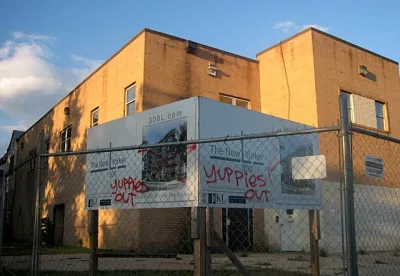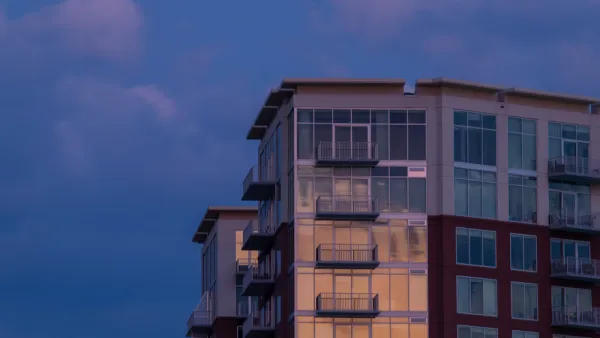The general principle is simple: more density equals lower prices and less environmental impact. But suburbia's imprint is deep, both on cities themselves and on how we expect to inhabit them.

In an article on Grist, Ben Adler doubts whether the urbanist trend will be enough to combat the ills of low density. Although urban populations are rising, "We're watching the demographics of cities change without getting the carbon-emissions-reducing benefits that the back-to-the-cities movement promised."
After decades of what we now consider underdevelopment, cities face chronic housing shortages. "Given that it's the capital of a country with twice as many people as in 1950, you wouldn't expect Washington to have shrunk, would you? Well, it has, and it hasn't fully bounced back."
And even though developers are steadily adding units, social factors stemming from the suburban boom are getting in the way. "D.C. doesn't suffer from a shrinking stock of housing. In fact, it has the most dwelling units in its history — it just has fewer people in each home [...] Middle-class Americans have simply become accustomed to more private space and comfort than previous generations."
Adler traces part of the problem to the racial and spacial vagaries of urban infilling. "In certain neighborhoods that have become trendy, high demand bids up housing prices, empty lots get filled in, and the population grows. In other neighborhoods, demand remains low and abandonment continues." Environmentalists (and some urbanists) want to fill in these empty spaces, only to confront inevitable gentrification and displacement as prices rise.
FULL STORY: Thanks to social change, urban density ain’t what it used to be

Analysis: Cybertruck Fatality Rate Far Exceeds That of Ford Pinto
The Tesla Cybertruck was recalled seven times last year.

National Parks Layoffs Will Cause Communities to Lose Billions
Thousands of essential park workers were laid off this week, just before the busy spring break season.

Retro-silient?: America’s First “Eco-burb,” The Woodlands Turns 50
A master-planned community north of Houston offers lessons on green infrastructure and resilient design, but falls short of its founder’s lofty affordability and walkability goals.

Test News Post 1
This is a summary

Analysis: Cybertruck Fatality Rate Far Exceeds That of Ford Pinto
The Tesla Cybertruck was recalled seven times last year.

Test News Headline 46
Test for the image on the front page.
Urban Design for Planners 1: Software Tools
This six-course series explores essential urban design concepts using open source software and equips planners with the tools they need to participate fully in the urban design process.
Planning for Universal Design
Learn the tools for implementing Universal Design in planning regulations.
EMC Planning Group, Inc.
Planetizen
Planetizen
Mpact (formerly Rail~Volution)
Great Falls Development Authority, Inc.
HUDs Office of Policy Development and Research
NYU Wagner Graduate School of Public Service




























